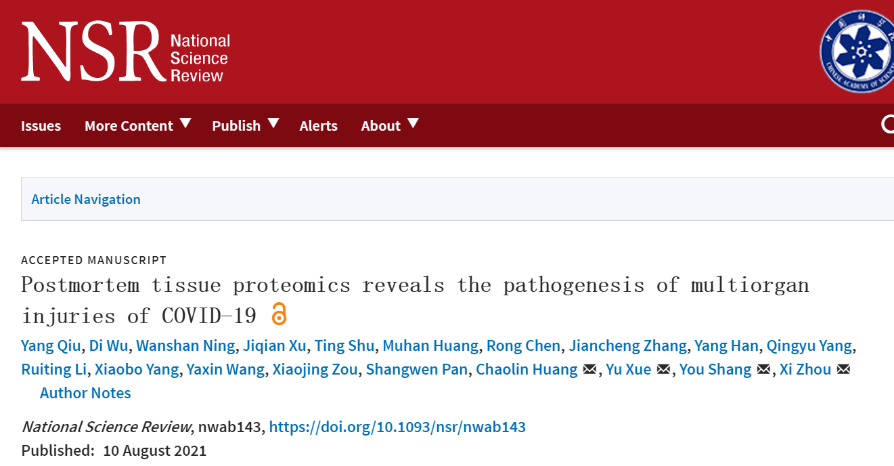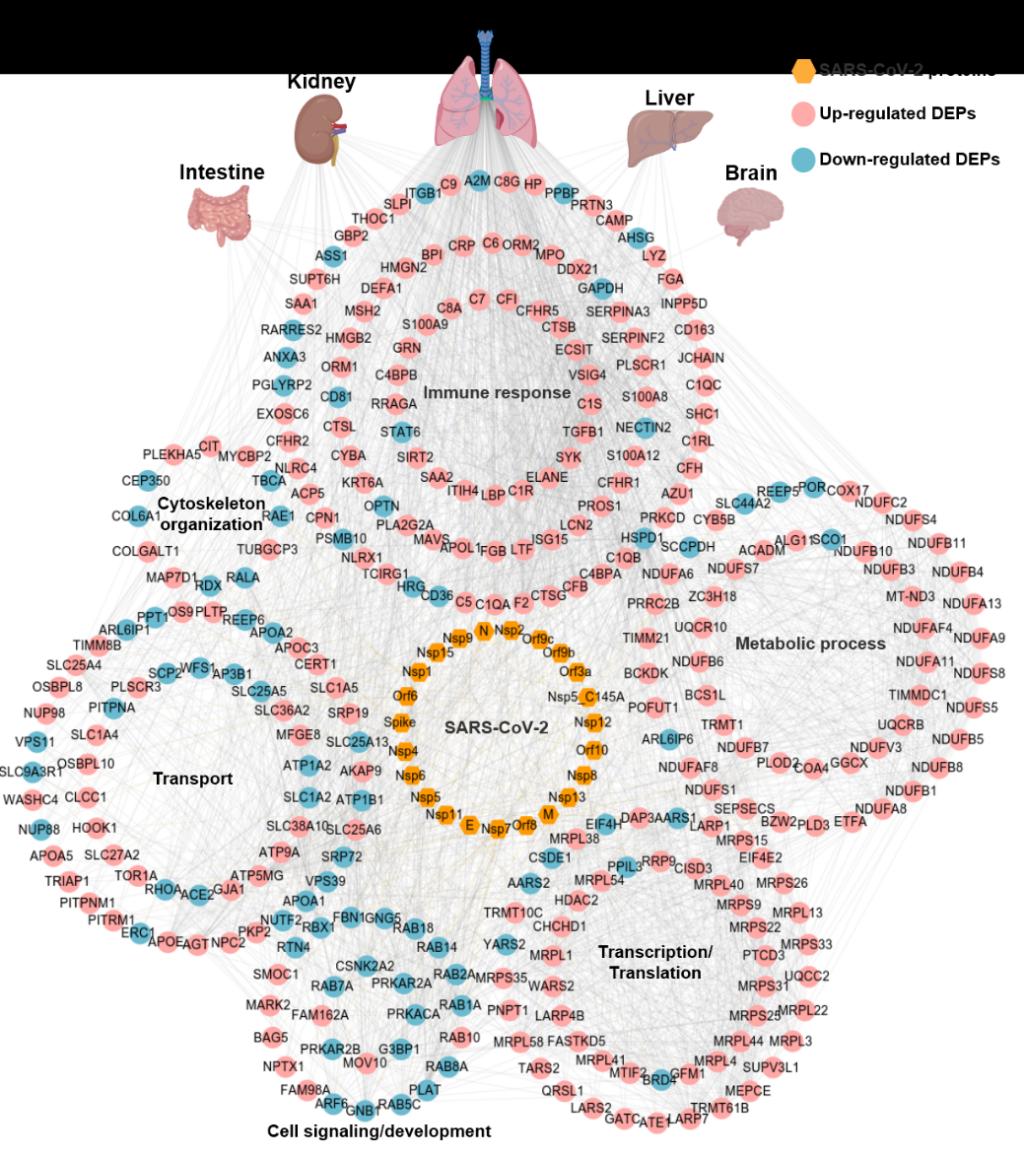By the end of August 11, 2021, the SARS-CoV-2 infection has caused more than 200 million confirmed COVID-19 cases and 4.32 million deceased with COVID-19 worldwide. The main targets of SARS-CoV-2 are human low respiratory tract and lung, while many other organs, including liver, heart, intestine, kidney, central nervous system and muscle have been also found to be injured. However, the molecular mechanisms underlying its pathogenesis, particularly the pathogenesis of COVID-19-associated multiorgan injuries, are still barely understood. Postmortem examination provides the most direct and reliable evidence of the pathophysiological changes in organs/tissues of disease victims, thereby representing an invaluable opportunity to understand the pathogenesis of COVID-19-associated multiorgan injuries.
The team of Professor Yu Xue from the College of Life Science and Technology of Huazhong University of Science and Technology (HUST), the team of researcher Xi Zhou from Wuhan Institute of Virology, the team of You Shang from Union Hospital of HUST, and the team of Chaolin Huang from Jinyintan Hospital cooperated to carry out the COVID-19 postmortem tissue proteomics studies, and draw a comprehensive protein map of multiple organs and multiple tissues in deceased patients with COVID-19. The article related to the research was published online on August 10, 2021 in the internationally renowned journal National Science Review (2020 IF: 17.2756). The title of the article is "Postmortem Tissue Proteomics Reveals the Pathogenesis of Multiorgan Injuries of COVID-19".

In this study, researchers profiled the host responses to fatal SARS-CoV-2 infection by performing quantitative proteomics of COVID-19 postmortem samples, including lung, liver, intestine, kidney, spleen, brain, heart and muscle and found a large number of protein changes related to multiorgan damage. lung underwent the most abundant protein alterations mainly enriched in immune-/inflammation-related or morphology-related processes, while surprisingly, other organs/tissues exhibited significant protein alterations mainly enriched in processes related with organ movement, respiration, and metabolism. These results indicate that the major cause of lung injury was excessive inflammatory response, and subsequent intravascular thrombosis and pulmonary architecture/function destruction, while other organs/tissues were mainly injured by hypoxia and functional impairment. Therefore, our findings demonstrate the significant pathophysiological alternations of host proteins/pathways associated with multiorgan injuries of COVID-19, which provides invaluable knowledge about COVID-19-associated host responses and sheds light on the pathogenesis of COVID-19.

Researcher Xi Zhou, Professor You Shang, Professor Yu Xue, and Professor Chaolin Huang are the co-corresponding authors of the paper; Researcher Yang Qiu, Dr. Di Wu, Dr. Wanshan Ning, Dr. Jiqian Xu, and Dr. Ting Shu are the co-first authors of the paper.This research was supported by the National Natural Science Foundation of China and the program for HUST Academic Frontier Youth Team.
https://academic.oup.com/nsr/advance-article/doi/10.1093/nsr/nwab143/6347352#